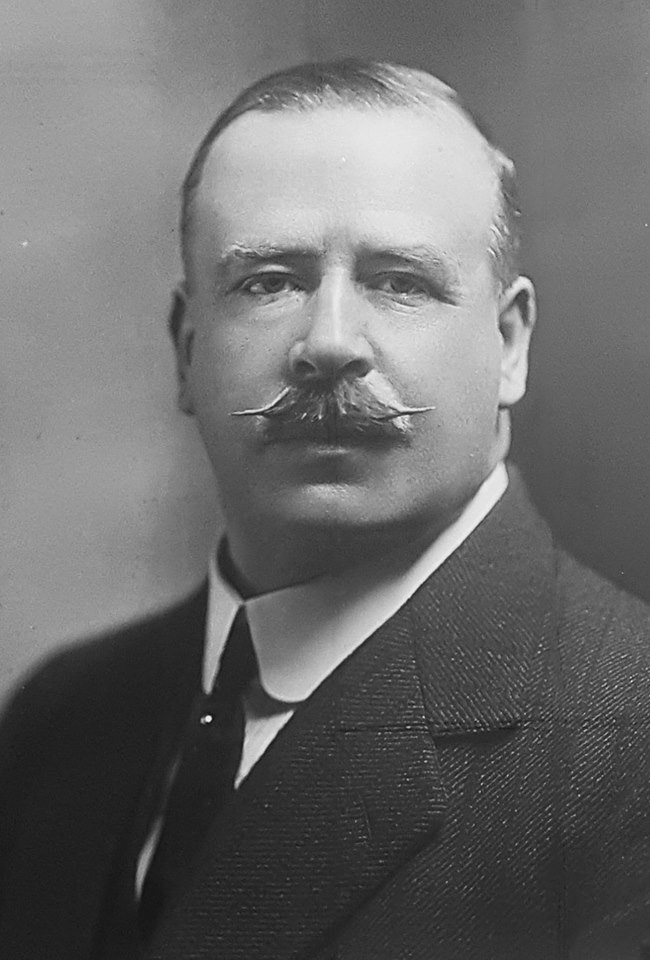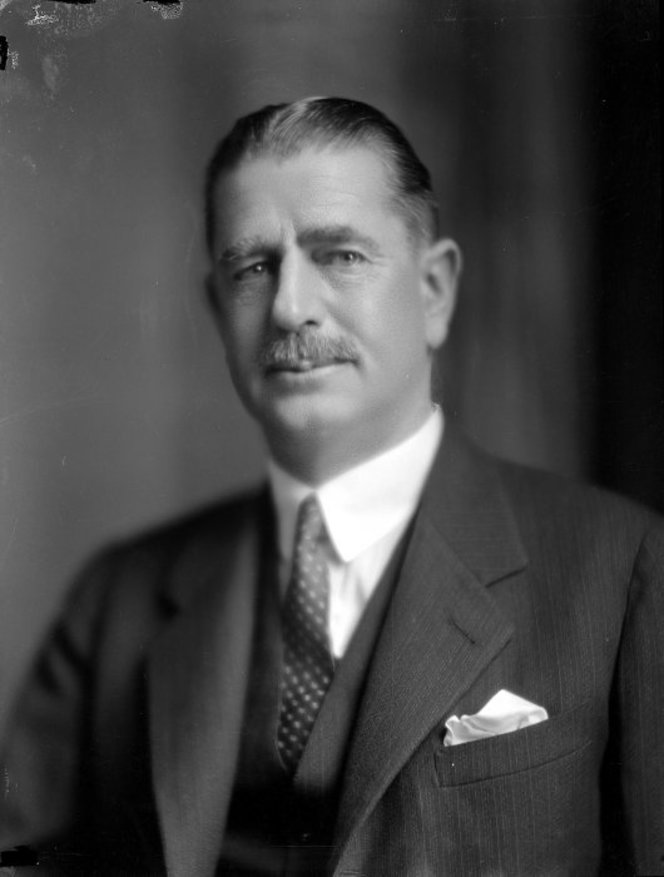|
Bill Barnard
William Edward Barnard (29 January 1886 – 12 March 1958) was a New Zealand lawyer, politician and parliamentary speaker. He was a member of New Zealand Parliament, Parliament from 1928 New Zealand general election, 1928 until 1943 New Zealand general election, 1943, and was its Speaker of the New Zealand House of Representatives, Speaker from 1936 till 1943. He was known for his association with John A. Lee, a prominent left-wing politician. Early life Barnard was born in Carterton, New Zealand, Carterton, a town in the Wairarapa region. He studied law at Victoria University of Wellington, Victoria University College, and became a lawyer in 1908. He eventually settled in Te Aroha, where he served on the borough council. In 1915, he travelled to the United Kingdom and joined the Royal Army Medical Corps to serve in World War I. After serving for a time in Egypt, he became a gunner in the Royal Field Artillery, serving in Palestine (region), Palestine. Following World War I, he ... [...More Info...] [...Related Items...] OR: [Wikipedia] [Google] [Baidu] |
The Honourable
''The Honourable'' (British English) or ''The Honorable'' (American English; see spelling differences) (abbreviation: ''Hon.'', ''Hon'ble'', or variations) is an honorific style that is used as a prefix before the names or titles of certain people, usually with official governmental or diplomatic positions. Use by governments International diplomacy In international diplomatic relations, representatives of foreign states are often styled as ''The Honourable''. Deputy chiefs of mission, , consuls-general and consuls are always given the style. All heads of consular posts, whether they are honorary or career postholders, are accorded the style according to the State Department of the United States. However, the style ''Excellency'' instead of ''The Honourable'' is used for ambassadors and high commissioners. Africa The Congo In the Democratic Republic of the Congo, the prefix 'Honourable' or 'Hon.' is used for members of both chambers of the Parliament of the Democratic Repu ... [...More Info...] [...Related Items...] OR: [Wikipedia] [Google] [Baidu] |
1928 New Zealand General Election
The 1928 New Zealand general election was held on 13 and 14 November in the Māori and European electorates, respectively, to elect 80 MPs to the 23rd session of the New Zealand Parliament. 1928 was the year postal voting was introduced for certain specified groups (e.g. invalids) who could not get to a polling booth on election day. The election The 1928 election was held on Tuesday, 13 November in the Māori electorates, and on Wednesday, 14 November in the general electorates to elect a total of 80 MPs to the 23rd session of Parliament. A total of 844,633 electors were registered on the European roll, of which 743,691 (88.05%) turned out to vote. All 80 electorates were contested. 47 and 29 electorates were in the North Island and South Island, respectively, plus the 4 Māori electorates. In 1927, a faction of the decaying Liberal Party formed a new organisation, which was eventually named the United Party. In 1928, to the considerable surprise of most observers and many m ... [...More Info...] [...Related Items...] OR: [Wikipedia] [Google] [Baidu] |
Napier, New Zealand
Napier ( ; mi, Ahuriri) is a city on the eastern coast of the North Island of New Zealand and the seat of the Hawke's Bay Region, Hawke's Bay region. It is a beachside city with a Napier Port, seaport, known for its sunny climate, esplanade lined with Araucaria heterophylla, Norfolk Pines and extensive Art Deco architecture. Napier is sometimes referred to as the "Nice of the Pacific Ocean, Pacific". The population of Napier is about About south of Napier is the inland city of Hastings, New Zealand, Hastings. These two neighbouring cities are often called "The Bay Cities" or "The Twin Cities" of New Zealand, with the two cities and the surrounding towns of Havelock North and Clive, New Zealand, Clive having a combined population of . The City of Napier has a land area of and a population density of 540.0 per square kilometre. Napier is the nexus of the largest wool centre in the Southern Hemisphere, and it has the primary export seaport for northeastern New Zealand – which ... [...More Info...] [...Related Items...] OR: [Wikipedia] [Google] [Baidu] |
Prime Minister Of New Zealand
The prime minister of New Zealand ( mi, Te pirimia o Aotearoa) is the head of government of New Zealand. The prime minister, Jacinda Ardern, leader of the New Zealand Labour Party, took office on 26 October 2017. The prime minister (informally abbreviated to PM) ranks as the most senior government minister. They are responsible for chairing meetings of Cabinet; allocating posts to ministers within the government; acting as the spokesperson for the government; and providing advice to the sovereign or the sovereign's representative, the governor-general. They also have ministerial responsibility for the Department of the Prime Minister and Cabinet. The office exists by a long-established convention, which originated in New Zealand's former colonial power, the then United Kingdom of Great Britain and Ireland. The convention stipulates that the governor-general must select as prime minister the person most likely to command the support, or confidence, of the House of Repres ... [...More Info...] [...Related Items...] OR: [Wikipedia] [Google] [Baidu] |
Gordon Coates
Joseph Gordon Coates (3 February 1878 – 27 May 1943) served as the 21st prime minister of New Zealand from 1925 to 1928. He was the third successive Reform prime minister since 1912. Born in rural Northland, Coates grew up on a cattle run and was bilingual in English and Te Reo Māori, the last New Zealand Prime Minister to be so. Coates took charge on the farm as a young age due to his father's mental illness, before becoming a Member of Parliament in 1911. He maintained a focus on farming issues and stood as an independent candidate. After distinguished service during World War I, he was appointed as Minister of Justice and Postmaster-General in the Reform government of William Massey (1919); he served as Minister of Public Works (1920–26) and Native Affairs (1921–28) and became prime minister in 1925 on Massey's death. Defeated in the elections of 1928, Coates returned to government in 1931 as the key figure in the coalition government of George Forbes. Serving as ... [...More Info...] [...Related Items...] OR: [Wikipedia] [Google] [Baidu] |
1925 New Zealand General Election
The 1925 New Zealand general election was held 4 November (the Māori vote had taken place the previous day) to elect a total of 80 MPs to the 22nd session of the New Zealand Parliament. A total number of 678,877 (90.02%) voters turned out to vote. In one seat (Bay of Plenty) there was only one candidate. In 1922, registration as an elector was made compulsory for all those eligible (except Māori). Results Gordon Coates continued as Prime Minister, with his Reform Party winning an outright majority of 30. Leonard Isitt and George Witty were both appointed to the Legislative Council by Gordon Coates on 28 October 1925; shortly before the election on 4 November. Both were Liberals but their retirement removed "a source of some bitterness from the Party's ranks". Gordon Coates was Reform, and both of their former seats went to Reform candidates. After the election both Labour and Liberals held 11 seats. A tie at 4,900 votes each in (between the Labour and Reform candidates) ... [...More Info...] [...Related Items...] OR: [Wikipedia] [Google] [Baidu] |
Palestine (region)
Palestine ( el, Παλαιστίνη, ; la, Palaestina; ar, فلسطين, , , ; he, פלשתינה, ) is a geographic region in Western Asia. It is usually considered to include Israel and the State of Palestine (i.e. West Bank and Gaza Strip), though some definitions also include part of northwestern Jordan. The first written records to attest the name of the region were those of the Twentieth dynasty of Egypt, which used the term "Peleset" in reference to the neighboring people or land. In the 8th century, Assyrian inscriptions refer to the region of "Palashtu" or "Pilistu". In the Hellenistic period, these names were carried over into Greek, appearing in the Histories of Herodotus in the more recognizable form of "Palaistine". The Roman Empire initially used other terms for the region, such as Judaea, but renamed the region Syria Palaestina after the Bar Kokhba revolt. During the Byzantine period, the region was split into the provinces of Palaestina Prima, Palaestin ... [...More Info...] [...Related Items...] OR: [Wikipedia] [Google] [Baidu] |
Royal Field Artillery
The Royal Field Artillery (RFA) of the British Army provided close artillery support for the infantry. It came into being when created as a distinct arm of the Royal Regiment of Artillery on 1 July 1899, serving alongside the other two arms of the regiment, the Royal Horse Artillery (RHA) and the Royal Garrison Artillery (RGA). It ceased to exist when it was amalgamated with the Royal Garrison Artillery in 1924. The Royal Field Artillery was the largest arm of the artillery. It was responsible for the medium calibre guns and howitzers deployed close to the front line and was reasonably mobile. It was organised into brigades, attached to divisions or higher formations. Notable members *Ernest Wright Alexander, Victoria Cross recipient *Colin Gubbins (1896–1976), prime mover of the Special Operations Executive (SOE) * Dar Lyon (1898–1964). first-class cricketer *Norman Manley (1893–1969), first Premier of Jamaica, serving from 14 August 1959 to 29 April 1962 * D ... [...More Info...] [...Related Items...] OR: [Wikipedia] [Google] [Baidu] |
Egypt
Egypt ( ar, مصر , ), officially the Arab Republic of Egypt, is a transcontinental country spanning the northeast corner of Africa and southwest corner of Asia via a land bridge formed by the Sinai Peninsula. It is bordered by the Mediterranean Sea to the north, the Gaza Strip of Palestine and Israel to the northeast, the Red Sea to the east, Sudan to the south, and Libya to the west. The Gulf of Aqaba in the northeast separates Egypt from Jordan and Saudi Arabia. Cairo is the capital and largest city of Egypt, while Alexandria, the second-largest city, is an important industrial and tourist hub at the Mediterranean coast. At approximately 100 million inhabitants, Egypt is the 14th-most populated country in the world. Egypt has one of the longest histories of any country, tracing its heritage along the Nile Delta back to the 6th–4th millennia BCE. Considered a cradle of civilisation, Ancient Egypt saw some of the earliest developments of writing, agriculture, ur ... [...More Info...] [...Related Items...] OR: [Wikipedia] [Google] [Baidu] |
Royal Army Medical Corps
The Royal Army Medical Corps (RAMC) is a specialist corps in the British Army which provides medical services to all Army personnel and their families, in war and in peace. The RAMC, the Royal Army Veterinary Corps, the Royal Army Dental Corps and Queen Alexandra's Royal Army Nursing Corps form the Army Medical Services. History Origins Medical services in the British armed services date from the formation of the Standing Regular Army after the Restoration of Charles II in 1660. Prior to this, from as early as the 13th century there are records of surgeons and physicians being appointed by the English army to attend in times of war; but this was the first time a career was provided for a Medical Officer (MO), both in peacetime and in war. For much of the next two hundred years, army medical provision was mostly arranged on a regimental basis, with each battalion arranging its own hospital facilities and medical supplies. An element of oversight was provided by the appointment ... [...More Info...] [...Related Items...] OR: [Wikipedia] [Google] [Baidu] |
Te Aroha
Te Aroha ( mi, Te Aroha-a-uta) is a rural town in the Waikato region of New Zealand with a population of 3,906 people in the 2013 census, an increase of 138 people since 2006. It is northeast of Hamilton and south of Thames. It sits at the foot of Mount Te Aroha, the highest point in the Kaimai Range. History The name Te Aroha derives from the Māori name of Mount Te Aroha. In one version, Rāhiri, the eponymous ancestor of Ngāti Rāhiri Tumutumu, climbed the mountain and saw his homeland in the distance and felt a sense of love () for it. The town is properly named ; meaning 'inland', so the town is named "love flowing inland". In some Tainui traditions, Rakataura, a tohunga of the ''Tainui'' waka, was one of the first people to leave the waka, settling at Rarotonga / Mount Smart. After a period of time, Rakataura decided to leave Tāmaki Makaurau and travel south, however during the journey his wife Kahukeke died. Eventually Rakataura settled at Te Aroha, naming the ... [...More Info...] [...Related Items...] OR: [Wikipedia] [Google] [Baidu] |
Victoria University Of Wellington
Victoria University of Wellington ( mi, Te Herenga Waka) is a university in Wellington, New Zealand. It was established in 1897 by Act of Parliament, and was a constituent college of the University of New Zealand. The university is well known for its programmes in law, the humanities, and some scientific disciplines, and offers a broad range of other courses. Entry to all courses at first year is open, and entry to second year in some programmes (e.g. law, criminology, creative writing, architecture, engineering) is restricted. Victoria had the highest average research grade in the New Zealand Government's Performance Based Research Fund exercise in both 2012 and 2018, having been ranked 4th in 2006 and 3rd in 2003. [...More Info...] [...Related Items...] OR: [Wikipedia] [Google] [Baidu] |





.jpg)
